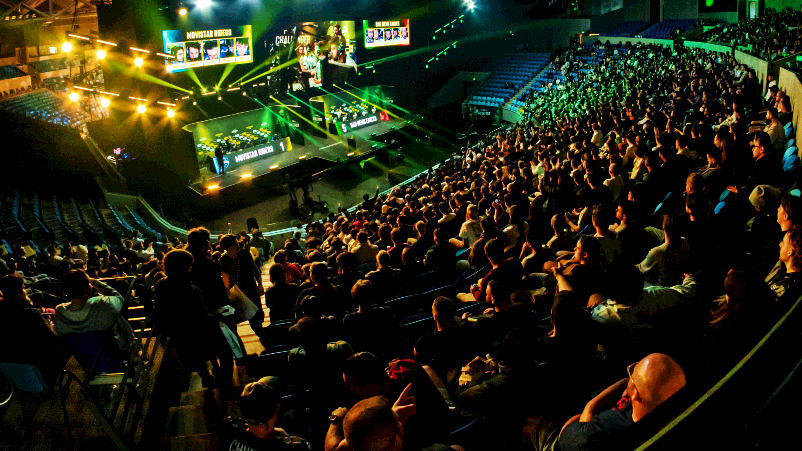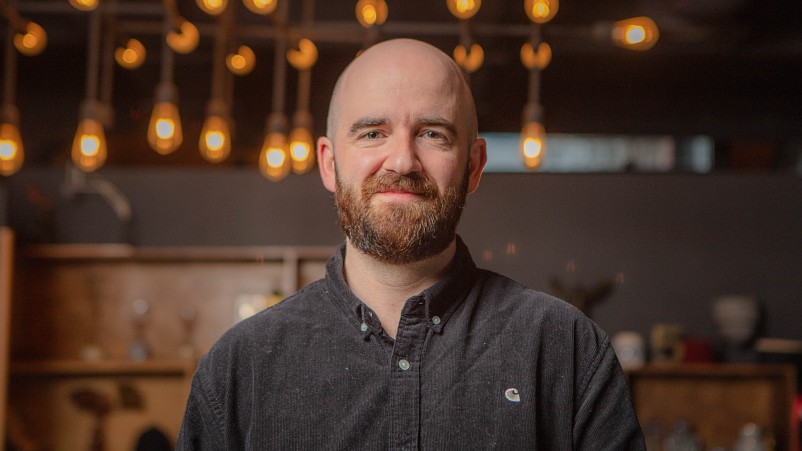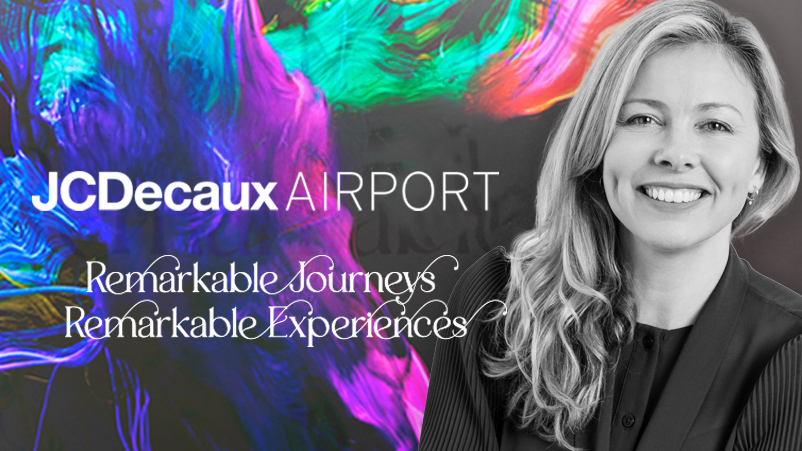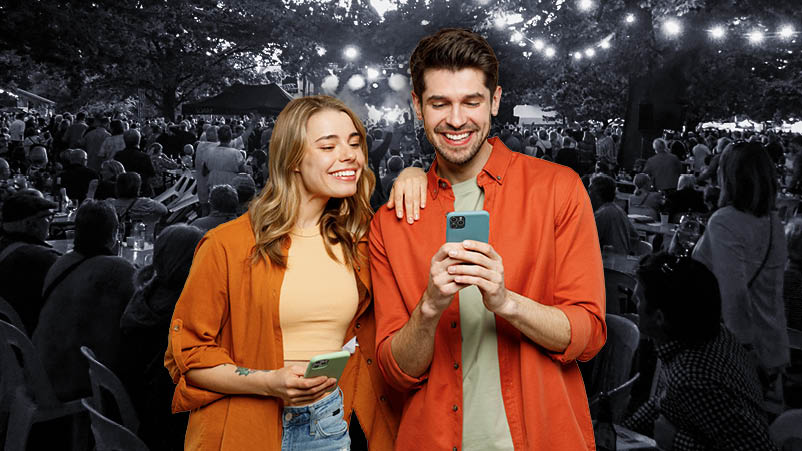McDonald's, Coke, UberEats, YouTube pile into gaming as PwC suggests in-game ad revenue has overtaken news media – and will double in four years

Australian brands will spend more than a billion dollars on advertising inside gaming environments this year, according to latest PwC figures, overtaking the combined advertising of digital and print media for the first time. By 2028, the firm suggests Australia’s in-game ad market will eat $2bn in local ad dollars. Engagement is massive – and younger audiences are spending more time gaming than on social media. Which provides an indication of how big the market will become.
What you need to know:
- Revenues for gaming advertising environments have overtaken the ad revenues for digital and print advertising this year as the former blew through the billion-dollar benchmark and the latter slipped beneath it. Within four years, that will double, per PwC.
- It's not just the games themselves pulling in the bucks. In any gold rush – even a slow-building one like this – it's the people selling picks and shovels that clean up. Offline gaming event specialist ESL FACEIT demonstrates that fact with the events like DreamHack Melbourne pulling in tens of thousands of gamers are willing to spend a healthy chunk of change to attend.
- Digital engagement with those live events attracts tens of thousands of concurrent users online, and millions more on channels like YouTube.
- The popularity of such events also demonstrates one of the most powerful aspects of gaming advertising – customer engagement.
- A report by international gaming research outfit Newzoo released earlier this year revealed that game enthusiasts dedicate nearly as much leisure time to video games as they do to TV, films, and music – and in some cohorts, way more.
- Gaming environments tend to demand the undivided attention of the consumer, not to mention monopolising the screen: If they don't concentrate when playing Call of Duty, they die.
- Gaming increasingly displays the characteristics of premium social, with a very strong sense of community that brands ignore at their peril.
- Brands like McDonald's, Coke, Uber, and YouTube are racking up impressive campaign results by tapping into the gamer mindset and partnering with key creators.
- But make sure you spend the time to understand the community's cultural nuance if you really want to succeed, says a jury member from this year's Spike.Asia Awards.
I think it's in-app gaming advertising that's going to take off. That has taken off more so recently, and it's set to grow. Globally, we're predicting that to grow at about 15 per cent CAGR. Part of that's driven by technologies; it just takes time to get momentum and get a market. And that's certainly what we're seeing now in the gaming sector.
The most impressive thing about the numbers out of ESL’s marquee DreamHack gaming event in Melbourne earlier this year was not the 35,000 people who stumped up sometimes hundreds of dollars to attend in person. It was the 20.8 million impressions on ESL’s owned channels over the course of the campaign.
Graeme Du Toit, Brand Partnerships Australia at ESL FACEIT Group has the air of a marketer who knows the planets are aligning."For brands who require a deep level of engagement when they activate marketing spend targeted at a young demographic, gaming audiences are now becoming the go-to."
He says gaming is one of Australia's most popular pastimes, with millions of gamers deeply engaged with their preferred games, gaming creators, and esports teams. That's been the case for years – with 2021 data suggesting half of the population are gamers, and that didn't count kids. It's just that the scaled audience was fragmented and marketing dollars hadn't caught up. Now they are starting to.
ESL FACEIT is part of the Savvy Gaming Group after the Saudi Arabian government-owned firm purchased ESL Gaming and FACEIT for $US1.5bn in 2022. It then merged them to amalgamate gaming's audiences together under one roof. That means "brands can naturally integrate and take advantage of the huge engagement in this segment" at scale, per Du Toit.
Just one of the streams at DreamHack – the Counterstrike competition – generated over 1 million video plays, equating to 441,000 hours watched, with concurrent viewers peaking at 47,610.
It’s enough to make a CTV programmer blush.
Their embarrassment might not end there. That’s because one of the most outstanding qualities of gaming as a marketing channel is the extraordinary levels of engagement. According to Newzoo an international research firm that specialised in the gaming sector, 80 per cent of consumers play video games. The figure for Australian consumers is 77 per cent according to Kaylee van Geene, Lead Research Operations and a contributor to Newzoo's How Consumers Engage with Gaming report. If that number seems high, it’s consistent with the figure published in yesterday’s PwC Media and Entertainment report for Australia.
Furthermore, Newzoo also reports that the global engagement levels for those highly sought-after Gen Z consumers and for Gen Alpha coming after them online are tracking to 90 per cent when looking at the issue of engagement with video game content, whether that’s as players on consoles, PCs or most commonly mobile phones, or as consumers of gaming content in channels like TikTok, Youtube, and Instagram.
In terms of the engagement of Australian consumers according to Newzoo's data;
- 77% of the online population in Australia has engaged with video games through playing, viewing, owning, or social behavior in the past six months.
- Around three-quarters have played games in the past six months.
- Around 9 out of 10 Gen Alpha and Gen Z consumers engage with gaming in Australia. 91% of Gen Alpha consumers have played video games in the past six months.
- Almost half of the online population in Australia enjoys viewing gaming video content. Two-thirds of Gen Z consumers especially enjoy viewing video gaming content.
Little wonder then that PwC's Australian Entertainment and Media Outlook, Perspectives Report released yesterday revealed how gaming is emerging as a potential advertising channel of choice and how it is expected to be one of the star performers in Australia’s media landscape over the next five years.
It's a far cry from PwC's 2021 outlook, which had gaming advertising at just $64m and which it forecast to reach $86m by 2025.
According to PwC’s Media and Entertainment Report, 2024, “In-app advertising and integrated advertising (equivalent to product placement within a game scene) are expected to increase by 7.6 percent CAGR to reach A$2.1 billion by 2028.”
Esports, is a smaller category in gaming where teams compete for money – often huge overflowing buckets of money – in games like Riot Games League of Legends, Valve's Dota2, and Microsoft's Halo. (Microsoft's gaming division, which includes Xbox hardware, Xbox content and services, and other gaming-related revenue, contributes $15bn a year to the company's coffers.)
The in-app gaming advertising forecast in Australia for 2024 is more than a billion dollars, according to PwC, which makes it bigger than the combined print and digital news advertising category which comes in at $995m. By 2028, there will be no comparison. While PwC predicts print and digital ads for the news category will flatline, gaming’s ad revenues will have swelled to over $2bn – with no sign of a slowdown.
According to Louise King, PwC’s Australian leader for technology, media, and entertainment, “Gaming is an area that’s really growing, the growth is really high and it's set to continue.”
In particular she believes that in-app gaming will lead the way.
“I think it's in-app gaming advertising that's going to take off. That has taken off more so recently, and it's set to grow. Globally, we're predicting that to grow at about 15 per cent CAGR. Part of that's driven by technologies; it just takes time to get momentum and get a market. And that's certainly what we're seeing now in the gaming sector.”
“But the technology is [also] becoming smarter and more intelligent.”
That means it's better placed to serve up relevant advertising in the game.
“In terms of what's going to drive future growth, we're really excited about new technology coming onto the market around VR, the headsets, holograms, and the way in which the consumers' data can be connected with the game itself.
She told Mi3, “There's this connection of technology, audience growth, and then the actual capability of the hardware. It is going to be super interesting as to where that plays out.”

Pic: Newzoo
Engagement
Earlier this year Newzoo’s research into consumers and gaming looked specifically at the issue of engagement.
The stats are impressive.
According to the authors of its How Consumers Engage with Gaming report, “Game enthusiasts dedicate nearly as much leisure time to video games as they do to TV, films, and music.”
New Zoo noted however that Gen Alpha enthusiasts spend more time engaging with games than every other activity, including social media.
“These younger consumers spend an average of 5.2 hours per week playing, viewing, and engaging with games ... This underscores how gaming has become mainstream and, for each new generation that gets into gaming, leads the way forward for media and entertainment culture.”
The report, based on a global survey of over 78,000 consumers also found that younger players are especially motivated by the competitive and cooperative social elements of gaming.
68 per cent of Gen Z players said their top motivation for online gaming was the ability to explore a new and vast open world and that rose to 73 per cent for Gen Z. The other key motivation was a deep or interesting storyline.
That motivation is translating to time on screen with both console and PC gamers saying they spend over two hours a day playing. Mobile gamers spent less time per day and more days a week in a gaming environment, with the result being that gamers across all platforms spent about five and a half hours a week on the tools.
And if the true test of the regard in which a service is held is the willingness of the consumer to pay, the gaming sector has learned not to be shy about putting its hand out.
The report reveals that 22 per cent of console players and 15 per cent of PC players stump up, spending $25 or more on gaming per month – what New Zoo defines as high spenders.
“PC or console players spend more on average than mobile players, with PC gaming having the highest share of medium or high spenders,“ according to the report. While each platform deploys different monetisation methods, the kinds of players they attract and the way they segment also influences spending patterns.
Finally, New Zoo also found that Gen Z, Gen Alpha, and Millennial female players are all more likely than older gamers to make that upfront investment on a boxed or downloaded game (or subscription). “This shows that paying audiences are growing more diverse with every passing gamer generation – gamers are less of a monolith than they’ve ever been, and the profile of a long-term paying player will continue to expand.”
If you think about how you actually drive engagement, as well as reach a broad audience for mobile games, you can drive visibility and awareness within game, but similarly, it is also the channel where you can drive conversations across a community.
Paying attention
One of the advantages of gaming as an advertising environment is that it demands undivided attention says Yun Yip, the chief customer officer of iion, a unified game advertising platform.
"It also tends to take up the whole screen, so, whether it's on a mobile, whether it's on your TV, or whether it's on your PC, it is the full screen – and in most cases, people don't want to be disturbed. The other thing too is that gaming is also considered what we would call premium social now. You might actually be playing with some of your friends overseas, or just on the same game in the same country, or it might be a 15-year-old playing Roblox with their friends. It's now become that community where you actually do get to drive conversations as well."
She told Mi3, "If you think about how you actually drive engagement, as well as reach a broad audience for mobile games, you can drive the visibility and awareness within game, but similarly, it is also the channel where you can drive conversations across a community."
Done well, the results can be powerful.
Creative executions
Take the example of McDonalds and Coke. During the delivery boom of Covid lockdowns, the two brands wanted to make an offer to gaming fans that would drive them to take immediate action while watching their favourite gamers' livestreams.
The key objective of the campaign was to increase familiarity, habit, and incidence of McDonald's with Coke delivered via UberEats.
They tapped up Click Media, a creative agency that specialises in gaming. The firm's creators (or influencers in Old English) promoted the release of instant reward codes that gave recipients "free Big Macs, free delivery and a $5 discount throughout a live two-hour stream on Twitch and YouTube gaming."
As to the execution, according to Click, its creators "jumped into ‘Among Us’ and were challenged to win as ‘the imposter’ to unlock free Big Mac meals. Once successful, the audience was rewarded instantly with a promotion code and prompted to log on to Uber Eats to claim their meal, all live."
The campaign generated 1.8 million impressions across Twitch and YouTube and generated an average Uber Eats Basket Spend of $21.51.
According to Jessica Wood, Head of Brand Partnerships at Click, "Creating a campaign that leaned on influencer-led creative concepts and trending games delivered strong results for the brands involved. The level of interaction across the two-hour stream can really only be delivered in a gaming/live stream environment. The community was cheering on the creators to unlock codes – so building positive audience sentiment was an added bonus for all involved.
Click was also involved in YouTube's Game On campaign which involved a collaboration between 60 of the world's leading creators and gamers.
"This included a Fall Guys ‘Protect the President’ style game, featuring Preston, CouRage, Sykkuno, and Typical Gamer, a GTA ‘Car Avalanche’ featuring The Sidemen, Fortnite ‘Balloon Pop’ including a custom Fortnite Map, and featuring Lachlan, Muselk, Ali A and Chica, among others."
Me neither. Either way, the campaign registered 95 per cent positive sentiment against a 60 per cent benchmark, achieved 8 million streams in a week, and generated 38,000 comments per minute while live. It also delivered a 1,300 per cent increase in organic traffic versus internal Spotlight benchmarks, per Click's website.
The campaign also won a Webby Award.
The quality of creative executions has been improving steadily, and it is also starting to fill the shelves of successful agencies with trophies, as the Spike Awards earlier this year demonstrated.
Culture forms 100 per cent of our marketing mix. We believe that we should be living in culture and with cultures. We invite that thinking throughout different aspects of the brand, from the menu items to how we approach community engagement and deliver personalised experiences on digital platforms.
Cultural insights
Seamus Higgins, Chief Creative Officer, R/GA Australia, served on the jury for Entertainment, Gaming, and Music at Spikes Asia. He told Mi3, "I really love work that actually aims to add something to culture and is culture up, rather than brand down. That feels like a really exciting place to be and I feel like that's something that unites those three categories."
"For them to work, they really have to be able to genuinely live in a culture and add something to the community that they intend to engage," he said.
Higgins said all the judges in the category aligned around the idea of culture, and cultural insights.
"Within gaming, you can have them within a gamer level. So across all gamers, the traits that they share, and then you can go right down into very specific gaming communities. And even within gaming communities you could go right into the specifics of a market that they want to break into, or that they want to grow awareness in."
The award submissions were roughly split 50/50 between gaming as the channel, and advertising the games themselves.
"It's really interesting seeing what brands have been doing within that space. We awarded the Grand Prix to a brand play from McDonald's that used a clever insight about gamers."
McDonald's regional marketing director, Asia Business Unit, Ada Lazaro, echoed Higgins's insights on culture in an interview with Spikes.Asia after winning the award: "Culture encompasses more than just advertising and branding. Rather, it's about integrating with societal trends, values, and consumer behaviours. This involves understanding and resonating with diverse cultural nuances, including local customs, preferences, and differences in lifestyles. Culture forms 100 per cent of our marketing mix. We believe that we should be living in culture and with cultures. We invite that thinking throughout different aspects of the brand, from the menu items to how we approach community engagement and deliver personalised experiences on digital platforms."
Higgins says McDonald's realised that many games seem to model their food in-game on its offering. "They got influencers to grab what looked like McDonald's food in the game. Then it was sent out with a hashtag like, this is McDonald's – share it, and they challenged other gamers to do that. It was really appealing to the gamers' sense of discovery."
Ultimately the campaign, executed by Leo Burnett Manilla, tapped into the gaming culture by leveraging the habits of gamers who love sharing screengrabs and achievements. This led to widespread participation, with gamers tagging McDonald's in over 350 gaming titles.
Higgins also referenced another campaign in the category which highlighted one of the great weaknesses of gaming as an advertising environment – brand safety – but also the pitfalls for brands that don't quite land what the community sees as their role in a cultural sense in the environment.
"It was by Maybelline, and it was called "Through their eyes" and it was created to highlight the bullying of female gamers." It generated a lot of debate between the judges, he said.
It's an endemic issue, said Higgins, "And it's horrendous across all of the platforms.
"In terms of the pros of that campaign, they did a really good job in drawing more attention to the issue, and I think probably by getting more male gamers to think twice about it, or to maybe call it out. But while Maybelline highlighted the issue, it didn't take any significant steps towards helping to resolve it. And I think that's the danger with a CSR campaign in our industry.
"In the past, we could get away with doing awareness campaigns, but we are much more aware of the responsibility that we have with the powers that we have, to actually drive change, not just highlight where change is needed."



